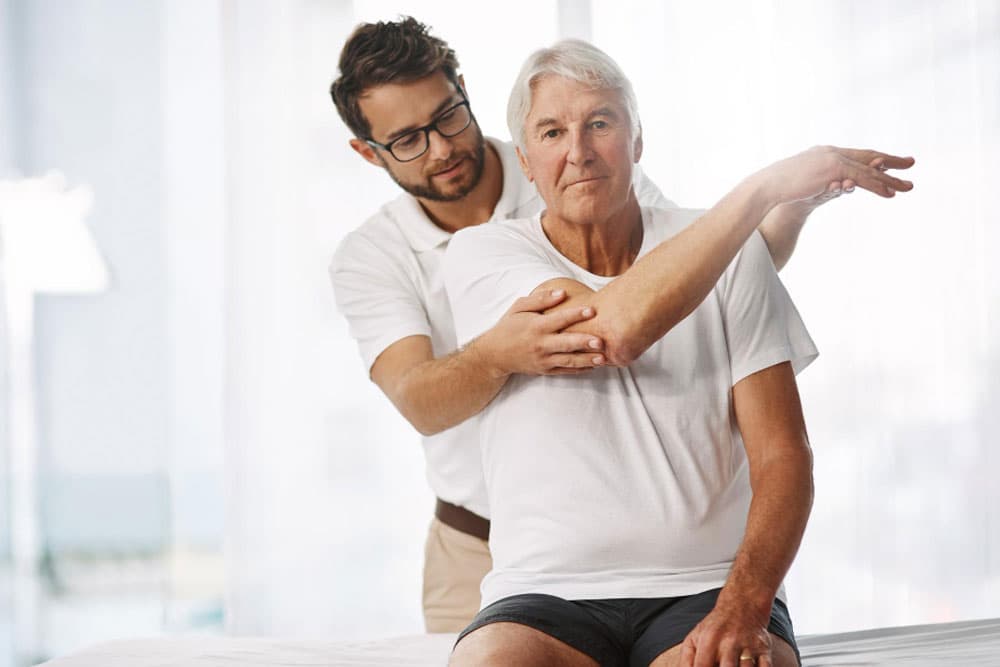Shoulder Joint
In a healthy shoulder joint, seamless collaboration among its components ensures pain-free movement. Disruptions caused by disease, arthritis, or injury can compromise normal function, resulting in shoulder pain, muscle weakness, and restricted movement. With longer life expectancies and increased activity, joint replacements, especially shoulder replacements, are becoming more prevalent as effective solutions to restore mobility and alleviate pain in a growing number of patients.
The shoulder, a ball-and-socket joint between the humerus and scapula, features a single-lifetime coating of thick cartilage on bone ends. Cartilage damage or wear, common in shoulder arthritis, leads to bones rubbing together, causing pain and inflammation.

1. Arthritis
Shoulder arthritis is a degenerative joint condition characterized by the inflammation and breakdown of the shoulder's protective cartilage, leading to pain and reduced mobility. Commonly caused by aging, joint overuse, or injury, shoulder arthritis results in symptoms such as persistent pain, stiffness, swelling, and limited range of motion. Osteoarthritis, the most prevalent form, involves the gradual wear and tear of cartilage, while rheumatoid arthritis, an autoimmune disorder, targets the synovium, causing joint damage. When conservative measures fail, surgical interventions like total shoulder replacement may be considered for severe cases, aiming to alleviate pain and restore joint function.
2. Ligament Injuries
Ligament injuries in the shoulder are disruptions to the tough, fibrous tissues connecting bones, often resulting from trauma or excessive stress. These injuries commonly affect the anterior cruciate ligament (ACL), posterior cruciate ligament (PCL), medial collateral ligament (MCL), and lateral collateral ligament (LCL). Reasons for ligament injuries include sudden twists, direct impacts, or hyperextension of the shoulder joint, often observed in sports or accidents. Symptoms include pain, swelling, instability, and difficulty bearing weight. Treatment varies based on the severity of the injury, ranging from conservative measures like rest and physical therapy to surgical reconstruction for complete ligament tears, aiming to restore stability and function to the shoulder.
3. Rotator Cuff Tears
Rotator cuff tears refer to injuries in the tendons and muscles that stabilize the shoulder joint. These tears often result from overuse, trauma, or degenerative conditions. Symptoms include pain, weakness, and difficulty with overhead movements. Treatment options vary based on the tear's size, location, and the patient's activity level. Small tears may heal with rest and physical therapy, while larger tears may require surgical intervention, such as arthroscopic repair or open surgery, to alleviate symptoms and restore shoulder function. Early diagnosis and appropriate management are crucial for optimal outcomes.

4. Labral Tears
Labral tears or injuries involve damage to the ring of cartilage (labrum) surrounding the shoulder socket. These tears can result from traumatic injuries, dislocations, or overuse. Symptoms include pain, instability, and a sensation of the shoulder "catching" or "locking" during movement. Treatment options range from conservative measures, such as rest and physical therapy, to surgical interventions for severe cases. Surgical procedures, such as labral repair or reconstruction, aim to restore stability and function to the shoulder joint. Early diagnosis and appropriate treatment help prevent long-term complications and improve overall shoulder function.
5. Fractures
Shoulder fractures involve breaks or cracks in the bones that make up the shoulder joint, including the humerus (upper arm bone), scapula (shoulder blade), and clavicle (collarbone). These fractures can result from various causes, such as traumatic injuries, falls, or high-impact accidents. Symptoms typically include pain, swelling, bruising, and difficulty moving the arm. The severity and type of fracture dictate the appropriate treatment. Stable fractures may be managed with immobilization, rest, and physical therapy, while more complex fractures may require surgical intervention. Surgical options may include internal fixation with screws, plates, or rods to stabilize the fractured bones. Rehabilitation and postoperative care are crucial for restoring function and preventing complications, emphasizing the importance of a personalized treatment approach based on the specific characteristics of the shoulder fracture.
6. Dislocations
Shoulder dislocations refer to the displacement of the humeral head from the shoulder socket. This condition often occurs due to a traumatic injury or excessive force applied to the shoulder joint. Symptoms of shoulder dislocation include pain, swelling, and difficulty moving the arm. Treatment options depend on the severity and recurrence of dislocations. Conservative approaches include closed reduction, followed by immobilization and physical therapy to strengthen the surrounding muscles. In more severe or recurrent cases, surgical intervention may be necessary. Surgical procedures, such as Bankart repair or capsular shift, aim to restore stability by repairing or tightening the damaged structures that hold the shoulder joint in place. Early diagnosis and appropriate treatment help prevent long-term complications and improve overall shoulder function.